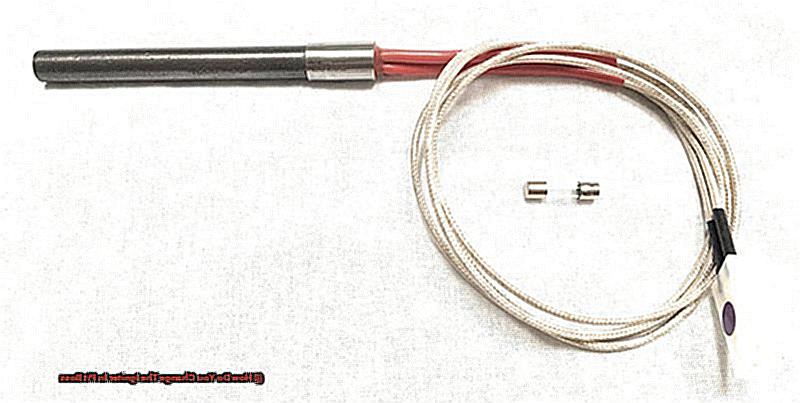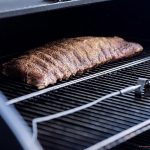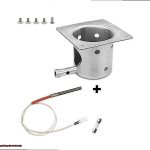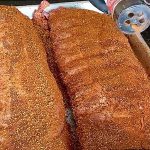Do you love the taste of juicy, tender brisket but get intimidated when it comes to chopping it up? Well, fear not. We’re here to guide you through the art of brisket chopping. The secret to a perfectly cooked and chopped brisket lies not only in the cooking process but also in the way it’s sliced or diced. Don’t worry – with some expert tips and techniques, anyone can achieve that mouth-watering texture.
First off, let your brisket rest for at least 20 minutes before getting started. This allows the juices to redistribute throughout the meat and results in a more succulent cut. Once rested, locate the grain of the meat by looking for long lines running through it. Slicing against these lines will give you tender pieces that are easy on your teeth.
But what if you’re after chopped brisket instead of slices? No worries. Grab a sharp knife and start chopping away against the grain in small sections of about one-inch cubes. Then use a rocking motion to chop those cubes into even smaller shreds until you’ve reached your desired consistency.
By following these simple tips, you’ll be well on your way to impressing everyone with your perfectly chopped brisket. So grab that meat and start practicing like a pro.
Contents
Choosing the Right Knife for Brisket Chopping
When it comes to brisket chopping, the right knife can make all the difference. Not only does a dull or inappropriate knife make the task difficult, but it can also be dangerous. With various knife options available in the market, choosing the right one for brisket chopping is essential to get perfect meat slices.
One of the most popular knives used for cutting brisket is a slicer or carving knife. This long, thin-bladed knife is specifically designed for slicing large cuts of meat like brisket. The long blade ensures smooth and even cuts while the sharp edge makes slicing through the meat effortless without tearing it apart. Slicers are perfect for achieving precise cuts of brisket and ensuring each piece of meat is roughly the same size.
Aside from slicers, chefs’ knives are also a versatile option that can be used for chopping vegetables and meat. However, when using a chef’s knife to chop brisket, it is vital to ensure that the blade is sharp and to use a sawing motion to cut through the meat. Chef’s knives are great for those who want an all-purpose knife that they can use for multiple tasks in the kitchen.
If you’re looking for an easier way to chop brisket, electric knives may be your solution. These knives are specially designed for cutting large pieces of meat and can make the task much more manageable. However, it’s important to note that electric knives are not suitable for all types of meat and may not provide the same level of precision as hand-held knives.
Trimming Off Excess Fat and Gristle from the Meat
Well, before you start, let’s talk about the importance of trimming off excess fat and gristle from the meat. Trust us, it’s a crucial step that will take your brisket game to the next level.
First things first, let’s talk about why trimming off excess fat is so important. Excess fat not only looks unappetizing on your plate but can also cause flare-ups while grilling. This can result in an unevenly cooked piece of meat and nobody wants that. Moreover, excess fat can make the meat taste greasy and heavy, which is not ideal for a delicious brisket.
But wait, there’s more. Have you ever had a piece of meat that is tough and chewy? That’s because of connective tissue or gristle present in the meat. These areas can be hard to eat and ruin the overall texture of the dish. Therefore, it’s essential to remove them before chopping up the brisket.
Now that we have established why trimming off excess fat and gristle is essential let’s talk about how to do it correctly. Firstly, use a sharp knife to cut away any visible large pieces of fat. Be sure to remove as much as possible but be careful not to take out too much meat in the process.
Next, look for any areas where you might find connective tissue or gristle. These could be around the edges or in between layers of meat. Use a knife or your fingers to gently remove these sections.
Finally, once all excess fat and gristle have been removed, it’s time to chop up the brisket into smaller pieces. Make sure to use a sharp knife or meat cleaver for clean and even cuts. Remember, uneven cuts can result in unevenly cooked pieces of meat.
To summarize, here are some key takeaways:
- Trim off excess fat to avoid flare-ups and a greasy taste.
- Remove connective tissue and gristle for a better texture.
- Use a sharp knife or meat cleaver for clean and even cuts.
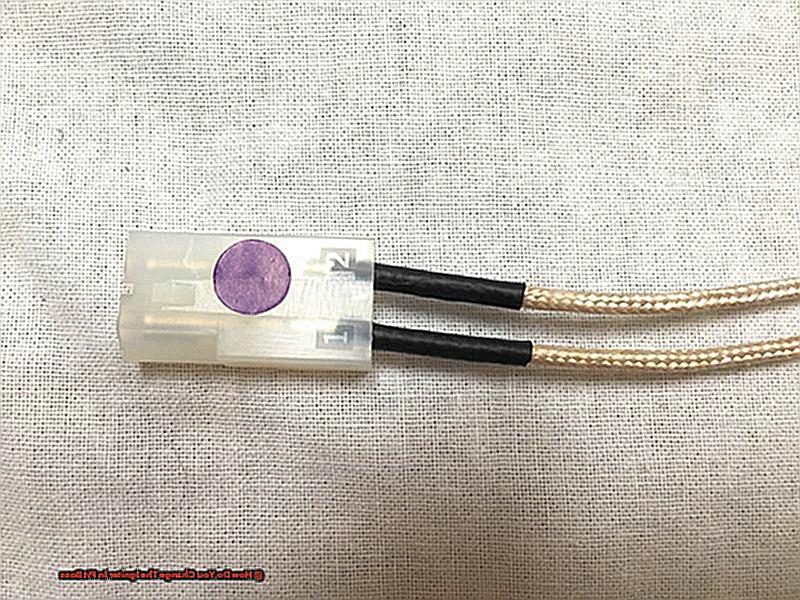
Slicing Against the Grain of the Meat
Then it’s time to master the crucial technique of slicing against the grain of the meat. By cutting perpendicular to the direction of the muscle fibers, you’ll create shorter, more tender strands of meat that are a pleasure to chew and savor.
But how do you identify the direction of the grain? Look for the lines running across the surface of the brisket or use your fingers to feel for the direction of the fibers. Once you’ve located it, position the brisket accordingly before slicing.
When it comes to tools, a sharp knife is non-negotiable. A dull blade will shred and tear the meat, resulting in a less appetizing dish. Take your time and use a smooth, steady motion to slice through the meat.
But wait, there’s more. If you want to impress your guests with an extra-tender brisket, consider slicing each piece individually against the grain rather than slicing the entire brisket at once. This ensures maximum tenderness and flavor in every bite.
Creating Bite-Sized Pieces for Sandwiches or Tacos
If you’re looking to take your sandwich or taco game to the next level, look no further than perfectly prepared, bite-sized pieces of brisket. As an expert in the art of creating these delectable morsels, I have some essential tips and tricks to share.
To start, let your brisket rest for at least 15 minutes after cooking. This crucial step allows the juices to redistribute and makes the meat more tender. Trust me, it’s worth being patient for this one.
Once your brisket has rested, it’s time to grab a sharp chef’s knife and slice against the grain. This method helps break up muscle fibers and create a more tender texture. After you’ve sliced the brisket into thin strips, chop them into bite-sized pieces.
When chopping your brisket, keep in mind the size of your bread or tortilla. For smaller sandwiches or tacos, aim for smaller pieces that will easily fit without spilling out. If you’re building a larger sandwich or burrito, bigger chunks will work better.
Don’t forget about seasoning. Brisket pairs well with a variety of spices and flavors like salt, pepper, garlic powder, onion powder, smoked paprika, and cumin. Experiment with different combinations to find what works best for you.
Keeping Larger Slices When Serving as a Main Course
First and foremost, make sure to give your brisket the rest it deserves. After cooking, let the meat rest for at least 15 minutes. This allows the juices to redistribute throughout the meat, making it tender and moist. Trust me, your taste buds will thank you.
Once your brisket has had its beauty sleep, it’s time to slice against the grain. This means cutting perpendicular to the direction of the muscle fibers. Not only does this create tender slices, but it also helps break down those tough muscle fibers.
When slicing, aim for pieces that are about 1/4 inch thick. This size is perfect for larger pieces while still being easy to eat. And don’t forget to remove any excess fat or gristle before serving. Nobody wants a mouthful of chewy gristle.
But here’s where things get interesting – cut your brisket at an angle. This creates longer slices that add an extra visual element to your dish. Plus, it’s a great way to showcase all that beautiful marbling and texture of the meat.
Tips and Tricks for Perfectly Chopping Brisket
Chopping brisket can be a bit intimidating, especially if you’re not used to handling large cuts of meat. But with a few helpful tips and tricks, you’ll be able to chop brisket like a pro in no time.
Let the brisket rest
After cooking your brisket, let it rest for at least 15-20 minutes before slicing it. This allows the meat to reabsorb its juices, making it more tender and easier to cut. It also helps prevent excess moisture from seeping out during the cutting process.
Use a sharp knife
A dull knife will make chopping brisket much harder than it needs to be. Make sure your knife is sharp before you start cutting. A long, thin-bladed slicing knife is ideal for slicing through the tough meat of a brisket.
Trim off excess fat
Before you start chopping, trim off any large pieces of fat or connective tissue from the surface of the brisket. This will make it easier to slice and improve the overall texture of the meat.
Slice against the grain
When it comes to slicing brisket, it’s best to slice against the grain (perpendicular to the muscle fibers). This results in more tender meat that is easy to chew.
Cut in thin slices
Aim for thin slices rather than thick chunks when chopping your brisket. This will help the meat cook more evenly and make it easier to serve.
Use a gentle sawing motion
To ensure even slices, use a gentle sawing motion with your knife rather than pressing down too hard. This will help prevent uneven cuts and make your sliced brisket look more professional.
Experiment with different angles
Don’t be afraid to experiment with different slicing techniques and angles. You may find that a slight tilt or angle can make all the difference in achieving perfectly chopped brisket.
Different Recipes to Try with Chopped Brisket
Look no further than chopped brisket for a world of culinary possibilities. From classic BBQ staples to innovative and delicious dishes, there are endless ways to use this flavorful meat.
Let’s start with the classics. Who doesn’t love a loaded baked potato? A fluffy potato is the perfect canvas for tender and juicy chopped brisket, melted cheese, sour cream, and any other toppings your heart desires. And let’s not forget about chili. Adding chopped brisket to chili adds an extra layer of flavor and makes it more satisfying.
Feeling adventurous? Try making brisket tacos. Soft corn tortillas filled with savory chopped brisket, creamy guacamole, spicy salsa, and crunchy lettuce make for a mouthwatering meal that’s easy to prepare. Or how about brisket mac and cheese? The succulent and flavorful meat elevates this comfort food classic to new heights.
But don’t stop there. Chopped brisket is a versatile ingredient that can be used in countless ways. Add it to omelets, breakfast burritos, quesadillas, or even pizza for a unique twist on your favorite dishes. Experiment with different flavors and cuisines to find what works best for you.
And let’s not forget about the importance of proper chopping technique. Rest the meat before slicing it with a sharp knife against the grain. Trim excess fat and slice thinly with a gentle sawing motion, experimenting with different angles for maximum tenderness.
Storing Leftover Chopped Brisket
Chopped brisket is a tasty and versatile meat that can be used in a variety of dishes. However, what do you do when you have leftover chopped brisket? Well, worry not. Below are some expert tips on storing and reheating your leftover brisket to ensure it stays fresh and safe for consumption.
Firstly, it’s crucial to refrigerate your leftover chopped brisket promptly after cooking it. The longer it stays at room temperature, the more susceptible it is to harmful bacteria growth. To store the brisket, place it in an airtight container or wrap it tightly in plastic wrap. This helps prevent moisture loss and freezer burn, keeping the meat fresh for longer.
If you plan on freezing your chopped brisket, label the container with the date of cooking and the date by which it should be consumed. Frozen brisket should be consumed within three months for optimal quality.
Reheating leftover chopped brisket is easy; just make sure to do so thoroughly to an internal temperature of 165°F (74°C) to kill any potential bacteria. You can use a microwave, oven, or stovetop to reheat the meat. Adding a little broth or sauce can help prevent the meat from drying out during reheating.
If you have a surplus of leftover chopped brisket that you won’t consume within a few days, consider freezing individual portions for future meals. This way, you can defrost only what you need and avoid wasting any leftovers. Besides, leftover brisket can be used in a variety of dishes such as tacos, sandwiches, or even as a topping on pizza.
Conclusion
To achieve that perfect texture and flavor when chopping brisket, there are a few key techniques and tools to keep in mind. First and foremost, allowing your brisket to rest for at least 20 minutes before slicing is essential. This allows the juices to redistribute throughout the meat, resulting in tender and juicy pieces.
When it comes to slicing, locating the grain of the meat is crucial. Look for long lines running through the brisket and slice against them for optimal tenderness. Using a sharp slicer or carving knife specifically designed for large cuts of meat like brisket can also make all the difference.
Trimming off excess fat and gristle is another important step in achieving mouth-watering chopped brisket. Not only does it improve the appearance of your dish, but it also prevents flare-ups while cooking and ensures even cooking throughout.
Properly storing leftover chopped brisket is also crucial for maintaining its quality. Refrigerate promptly after cooking and reheat thoroughly before enjoying.

